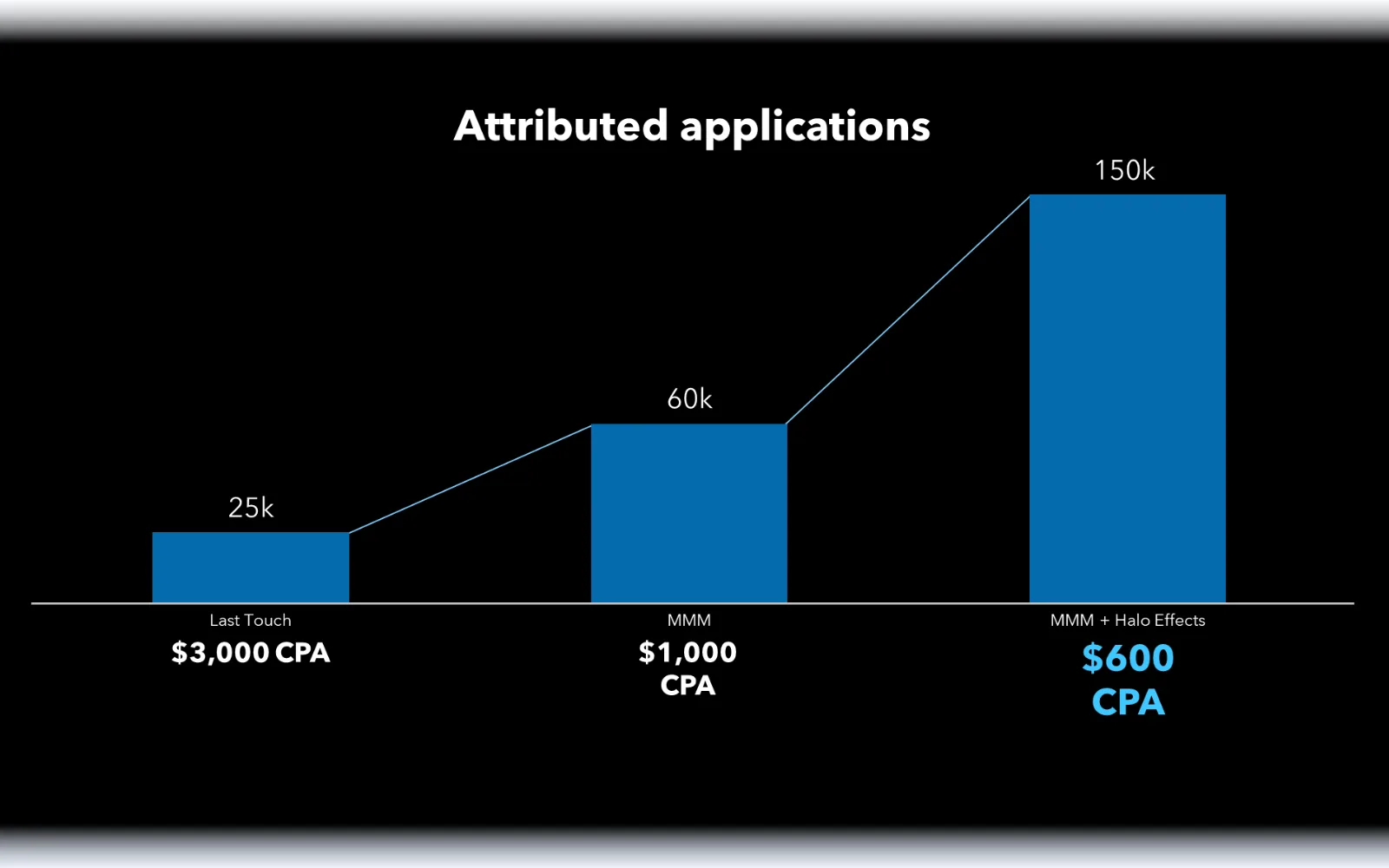Marketing effectiveness case study
Driving customer acquisition efficiency with marketing science
The challenge
How can we leverage data to validate our marketing budget?
With costs of online and offline channels rising, a Fortune 50 healthcare payer was facing the challenge of justifying annual marketing expenditures.
The organization had previously invested in various marketing effectiveness measurement tools to aid in making investment decisions. However, these tools lacked integration and coherence.
This disjointed approach resulted in fragmented insights, which hindered leadership’s ability to grasp the marketing landscape and to allocate resources effectively.
The objective
Aggregate data sources to measure and optimize marketing spend
The client engaged Marketbridge to help them with marketing channel allocation. The goal was to enable informed decision-making by harmonizing various data sources and marketing effectiveness tools to provide a comprehensive view of the impact of marketing investments on business performance.
Objective 1: Understand Full-Funnel Marketing Influence
Determine which channels across the funnel are driving applications:
- Quantify the impact on applications to inform proactive marketing strategies.
- Transition from last-touch attribution to an econometric (MMM/MTA) approach.
- Produce a nuanced-view of the halo effects between channels.
Objective 2: Build a System for Scenario Planning & Forecasting
Integrate marketing effectiveness measurement into the investment tools ecosystem to:
- Use models to test different marketing investment scenarios.
- Develop a forecasting model for predicting call volume and application demand.
- Deliver predictive insights to inform sales capacity decisions that maximize performance.
The solution
Advanced statistical modeling led to enhanced marketing strategy
Marketbridge employed rigorous, scientific methods to quantify the return on marketing investment for each channel. This knowledge helped the client improve its investment strategy through more informed budget allocation decisions.
Part 1: Implement Comprehensive Marketing Effectiveness Insights
The team implemented a comprehensive marketing effectiveness system that offered actionable insights to guide strategic decision-making. The solutions included:
(A) Modeling and Attribution
The transition from simplistic last-touch attribution methods to a more holistic MMM and MTA approach illuminated the full spectrum of marketing impacts, revealing long-term brand value and cross-channel synergies.

(B) Forecasting
A sophisticated deterministic model provided accurate forecasts that enabled the healthcare payer to anticipate weekly demand at the market-level and adjust marketing strategies.
Part 2: Optimize Marketing Channel Efficiency
Using insights generated from the models developed above, Marketbridge created a centralized view of marketing spend effectiveness, facilitating rapid reallocation of budgets to maximize impact and return on investment. Client benefits included:
(A) Channel Optimization
Invest more in high-performing channels while reducing spend in underperforming areas, based on detailed ROI analysis.

(B) Increased Organizational Coordination
Ensure that marketing and sales efforts were not only aligned but also mutually reinforcing, maximizing overall business performance.
Business impact
Efficient marketing planning led to improvements across several KPI's
With more efficient resource allocation and data-driven decision-making, Marketbridge’s client successfully navigated industry headwinds and charted a successful path forward.
Improved Marketing Efficiency
With transparent insights and accurate forecasting, the healthcare payer’s leadership gained the confidence to make proactive and informed adjustments to marketing strategies, enhancing overall marketing efficiency.
Optimized Resource Allocation
The implementation of a nuanced attribution model and better channel optimization led to a reduction in acquisition costs and an increase in marketing ROI.
Strategic budget reallocations allowed the company to capitalize on high-impact marketing opportunities, driving greater efficiency and effectiveness across all marketing and sales initiatives.